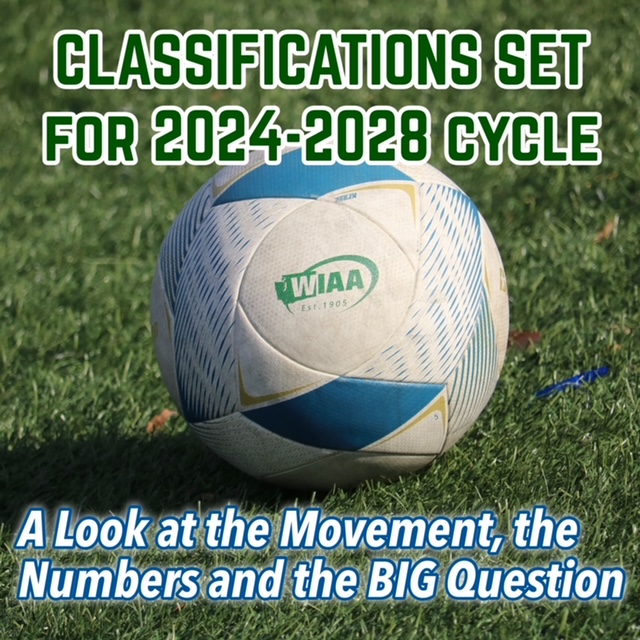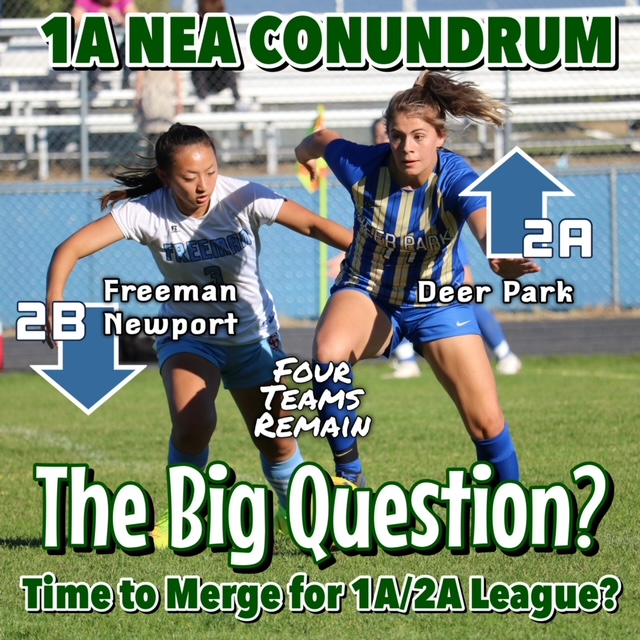The WIAA publicly released the classifications list recently for the next four-year span of athletic competitions across the state, starting in the fall of 2024 and running through spring of 2028. Several area schools will find themselves in new tiers for the next cycle.

Among the upper 3A/4A league there were only a few changes from the past cycle with the chief one among them being the return of Shadle Park amongst its traditional foes after a stint down in 2A. The Highlanders moved up to 3A, which will again feature seven teams. The 4A group of three from the past cycle saw Central Valley drop down to 3A whilst Ferris and Mead went up to make it a group of four.
The real shakeups come further down the table as several schools exited the 1A tier, leaving it a small four-team grouping. Deer Park moved up to 2A, essentially filling Shadle’s spot to maintain a grouping of six in that tier. Meanwhile, Freeman and Newport dropped down a tier to 2B, which will now be much more robust.
That leads us to…
THE BIG QUESTION: Is it time for NEA to disband and merge the 1A schools up with GSL 2A similar to how the 3A/4A competition grouping works?
Well, the blueprint is certainly there. In the last classification overhaul four years ago the Great Northern League (2A) merged into the GSL when Cheney moved up into the 3A tier, leaving just four 2A schools. The GNL schools – from a soccer point of view – were not overwhelmed en masse and in some cases were the better sides. Plus, from a quality of competition standpoint, there will never be a perfect grouping of schools (over the four-year terms) until they are able to move up or down multiple tiers and by individual sports to eliminate the continuous misplacement of overwhelmed programs because the WIAA refuses to admit there is more to a school’s sport-by-sport competitive capability than enrollment, academics and socioeconomic welfare figures.

Merging the two tiers, though, is not a simple task as it is something that has to be decided at the school principals level and not through the athletic departments. One source, on the athletics side of matters, indicated the idea has been broached, but they did not believe there was much traction for it.
In other words, if the parents and communities for these schools don’t speak up publicly – and quickly – there could be a very awkward four-year competition cycle coming up for the 1A and 2A schools.
From an outside perspective, bringing all the teams in eastern Washington (outside of the MCC) under the same administrative and operational umbrella would make the most sense given that the classification tiers will probably never reach the number of members needed for a travel-friendly single-class competitive schedule in this region of the state. And with the swings in enrollment from cycle to cycle leading to changes nearly every time, having everyone under the same structure will lead – long term – to easier transitions each new cycle. Plus, it would not hurt to have the smaller-school tiers working within the same operational structure for better management so that they can take advantage of the expertise and experience with which those tiers have been run. Branding may have to be discussed if the growth were to continue to the 1A and potentially B tiers, but that seems trivial in comparison to the primary goal of creating a fulfilling competitive structure for everyone to play within.
By the Numbers
- Ferris’ enrollment numbers dropped two percent, but the Saxons are moving up a class due to the WIAA dropping the entry point for 4A down 100 students (the only change in the ranges).
- Ridgeline Effect: The introduction of the new school saw significant enrollment changes amongst the Spokane Valley area schools. Chief among them was Central Valley dropping 41 percent, going down a tier, and University 16 percent.
- Freeman’s enrollment dropped a mere 10 students on average, but the separation mark was halfway between the previous term’s average and the current, sending them down a class.
- Both Freeman and Newport are within nine students of the classification barrier in their adjusted average enrollment figures and probably could have opted up to remain 1A but did not request to do so, leaving 1A in its four-team situation. It is particularly surprising for Freeman – sitting just four shy of the enrollment barrier – considering it was top three in the most recent seasons for girls soccer (2), football (3), volleyball (1) and boys basketball (1).
- Redistricting may have created some shifts as well elsewhere with Shadle seeing the biggest change at an increase of 25 percent. Mead and Mt Spokane also saw a shift, which led to the Panthers bumping up a tier.
- Cheney’s enrollment rose 11 percent to put them over the 1100 mark with continued growth potentially pointing toward 4A status in the next cycle if the bar remains 1200. Ridgeline is nearly there already at 1138.
- Adjusted Enrollment Figure is determined through the use of the Direct Cert percentage. For an explanation, visit: https://mailchi.mp/wiaa/2024-2028-classifications-584051
THE CLASSIFICATIONS TABLE & DATA
